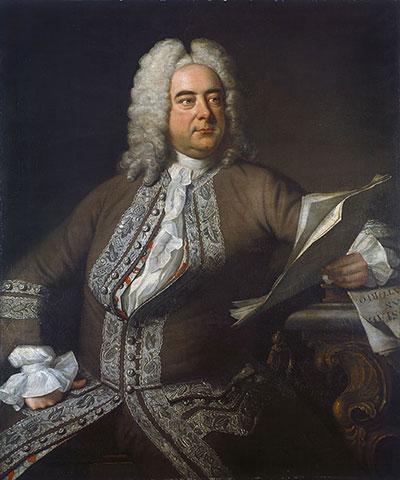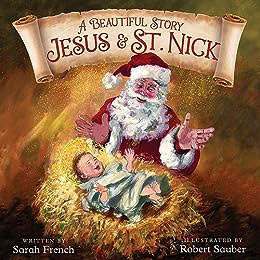 Each Advent, many churches and community choirs host the beloved tradition of a “Messiah” sing-a-long. The libretto – or text – is full of paraphrased Old Testament references to the birth of Christ and prepares listeners for a Christmas mindset.
Each Advent, many churches and community choirs host the beloved tradition of a “Messiah” sing-a-long. The libretto – or text – is full of paraphrased Old Testament references to the birth of Christ and prepares listeners for a Christmas mindset.
Although G.F. Handel’s “Messiah” is undoubtedly the most well-known oratorio in history and hugely popular in England and Germany, the genre actually originated in Italy. During the Counter Reformation, St. Philip Neri (1515-95), who wrote the rule for the Congregation of the Oratory, believed the faithful could benefit from prayers, songs, and even concerts of sacred music in the vernacular. An oratory is where such practices were held and where the word “oratorio” originates.
Initially, the genre of oratorio was small and, at times, used as a substitute for bombastic opera during the penitential season of Lent. To reflect the spirit of the season, the texts retold stories of sacrifice from the Old Testament. In the oratorio’s origins, the texts were either in Latin or the vernacular (and thus classified as oratorio latino or volgare, respectively). By the time of Handel’s “Messiah,” the length, instrumental and vocal resources had expanded monumentally, and the texts were in the language of the people.
The work was composed extraordinarily quickly: begun Aug. 22, 1741, and completed less than a month later on Sept. 14. To conserve space at the premiere, women were advised not to wear hoops in their gowns and men were asked to leave their swords at home.
“The Messiah” is in three parts, with the first part being the Christmas section. Unusual for the genre, no specific named characters appear in this part. For instance, there is no role for the Blessed Mother or St. Joseph. Instead, Charles Jennens, who also provided Handel with the text for several other oratorios, paraphrased parts of the Bible to narrate the story.
“Rejoice Greatly,” a soprano solo, is a Da Capo Aria, a three-part form with texts truncated from the Book of Zechariah (Zech 9:9-10): “Rejoice greatly, O daughter of Zion! Shout, O daughter of Jerusalem, behold thy King cometh unto thee. He is the righteous Savior, and He shall speak peace unto the heathen.” The first section begins in B-flat major, a tonality associated with hope, clearly appropriate here.
An instrumental theme opens the work and introduces the melody that will be repeated upon the soprano’s entrance. The singer repeats the word “rejoice” numerous times in the first section, with Handel enhancing the mood by adding many, many notes on reiterations of the word.
The second part of the aria provides musical contrast and begins on the text, “He is the Righteous Savior.” The joyful major key is replaced by minor with the volume lessened considerably. The final part returns to the opening in the original key and, although unnotated, the singer is expected to embellish or add extra notes, making the music simultaneously familiar and new.
Handel’s devotion to his craft was legendary. He once threatened to hold a soprano out the window until she agreed to perform the music the way he intended (she wisely acquiesced). His high standards and unwillingness to compromise contributed substantially to the history of music. His works in the sacred genre, particularly his beloved
“Messiah,” are a wonderful soundtrack to celebrate the Feast of the Nativity and prepare our hearts and minds for the coming of Our Savior.
Christina L. Reitz, Ph.D., is a professor of music at Western Carolina University in Cullowhee.
Watch it online
Watch a rendition of Handel’s “Messiah” by the Staatskapelle Dresden, conducted by Alondra de la Parra in 2019.
 CHARLOTTE — Charlotte-based TV anchor Sarah French is used to telling stories through her role as a reporter and anchor for WCNC-TV. Recently, however, she turned her storytelling skills to the printed page to help children get back to the Christian origins of a now secularized Christmas holiday.
CHARLOTTE — Charlotte-based TV anchor Sarah French is used to telling stories through her role as a reporter and anchor for WCNC-TV. Recently, however, she turned her storytelling skills to the printed page to help children get back to the Christian origins of a now secularized Christmas holiday.
“I was looking for a book for my kids that told the story of Jesus’ birth but also explained the origin of Santa Claus in the very real person who was St. Nicholas, and I couldn’t find one,” French said. “So, I decided to write my own.”
The result is her new, colorful children’s book “A Beautiful Story: Jesus and St. Nick,” which tells the narratives of both Jesus’ birth and the life of St. Nicholas. Born in the third century to a wealthy family, the early Christian bishop became known for his tradition of distributing his family’s wealth through secret gift-giving to the needy, which eventually evolved into the modern secular figure of Santa Claus, or, more affectionately, “St. Nick.”
“I have two kids and I love history, so I enjoy teaching them about why we celebrate certain holidays and traditions,” French said.
“I was amazed people didn’t realize that St. Nicholas was a real person. I wanted my kids and others to know that the man behind the tradition of Santa Claus was a real follower of Christ.”
She first wrote up the story about two years ago, using a scrapbooking website to create the layout she envisioned for the book.
French eventually got connected with illustrator Robert Sauber, who worked with her to bring her initial visions to life on the printed page.
Released Sept. 12, the book also explores the origins of common holiday traditions such as hanging up stockings and the Dec. 6 feast day of St. Nicholas, which includes the custom of children leaving their shoes outside their doors so the visiting saint can leave gifts in them.
“When I first held the book, I remember thinking that I hope it’s a blessing for the people who read it,” French said. “The heart of the story is both Jesus and St. Nicholas, a man who thought about other people and gave to other people. My goal is to have my kids show Christ’s love to others – that’s our job as parents – and I hope this book can help teach other kids not only about our traditions, but also a lesson about sharing and giving.”
 French’s late grandmother, who passed away in March, was one of her main inspirations for the book because she was a strong woman of faith who loved Christmas, often keeping her decorations up all year long, French said.
French’s late grandmother, who passed away in March, was one of her main inspirations for the book because she was a strong woman of faith who loved Christmas, often keeping her decorations up all year long, French said.
The book is currently available online through Amazon and Barnes & Noble and will soon be on sale at select local bookstores.
— Christina L. Knauss

